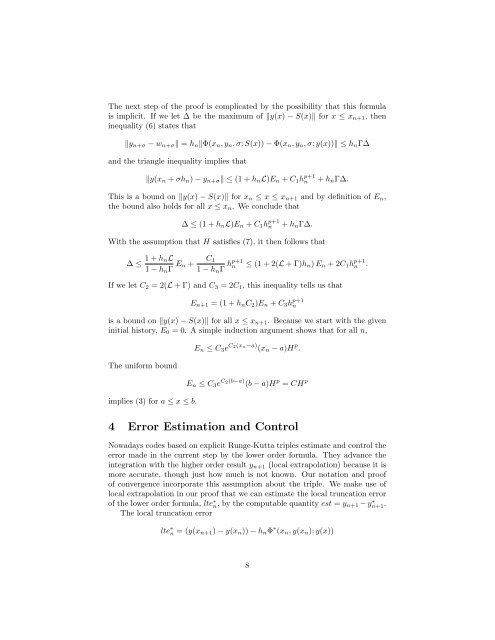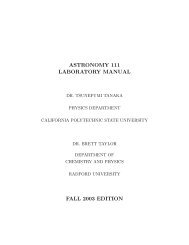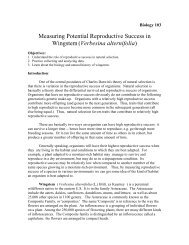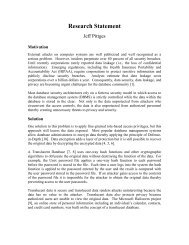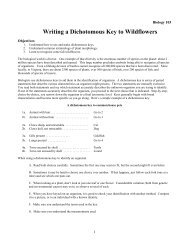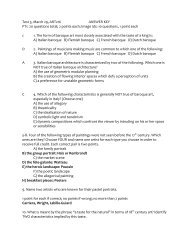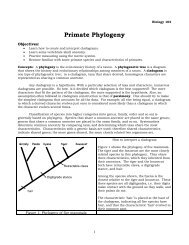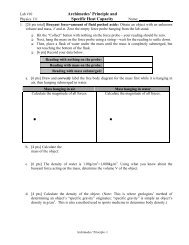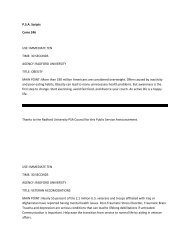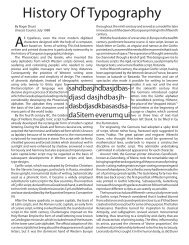Solving DDEs in Matlab - Radford University
Solving DDEs in Matlab - Radford University
Solving DDEs in Matlab - Radford University
You also want an ePaper? Increase the reach of your titles
YUMPU automatically turns print PDFs into web optimized ePapers that Google loves.
The next step of the proof is complicated by the possibility that this formula<br />
is implicit. If we let ∆ be the maximum of �y(x) − S(x)� for x ≤ xn+1, then<br />
<strong>in</strong>equality (6) states that<br />
�yn+σ − wn+σ� = hn�Φ(xn, yn, σ; S(x)) − Φ(xn, yn, σ; y(x))� ≤ hnΓ∆<br />
and the triangle <strong>in</strong>equality implies that<br />
�y(xn + σhn) − yn+σ� ≤ (1 + hnL)En + C1h p+1<br />
n<br />
+ hnΓ∆.<br />
This is a bound on �y(x) − S(x)� for xn ≤ x ≤ xn+1 and by def<strong>in</strong>ition of En,<br />
the bound also holds for all x ≤ xn. We conclude that<br />
∆ ≤ (1 + hnL)En + C1h p+1<br />
n<br />
+ hnΓ∆.<br />
With the assumption that H satisfies (7), it then follows that<br />
∆ ≤<br />
1 + hnL<br />
1 − hnΓ En + C1<br />
1 − hnΓ hp+1 n ≤ (1 + 2(L + Γ)hn) En + 2C1h p+1<br />
n .<br />
If we let C2 = 2(L + Γ) and C3 = 2C1, this <strong>in</strong>equality tells us that<br />
En+1 = (1 + hnC2)En + C3h p+1<br />
n<br />
is a bound on �y(x) − S(x)� for all x ≤ xn+1. Because we start with the given<br />
<strong>in</strong>itial history, E0 = 0. A simple <strong>in</strong>duction argument shows that for all n,<br />
The uniform bound<br />
implies (3) for a ≤ x ≤ b.<br />
En ≤ C3e C2(xn−a) (xn − a)H p .<br />
En ≤ C3e C2(b−a) (b − a)H p = CH p<br />
4 Error Estimation and Control<br />
Nowadays codes based on explicit Runge-Kutta triples estimate and control the<br />
error made <strong>in</strong> the current step by the lower order formula. They advance the<br />
<strong>in</strong>tegration with the higher order result yn+1 (local extrapolation) because it is<br />
more accurate, though just how much is not known. Our notation and proof<br />
of convergence <strong>in</strong>corporate this assumption about the triple. We make use of<br />
local extrapolation <strong>in</strong> our proof that we can estimate the local truncation error<br />
of the lower order formula, lte ∗ n, by the computable quantity est = yn+1 − y ∗ n+1.<br />
The local truncation error<br />
lte ∗ n = (y(xn+1) − y(xn)) − hnΦ ∗ (xn, y(xn); y(x))<br />
8


